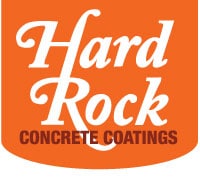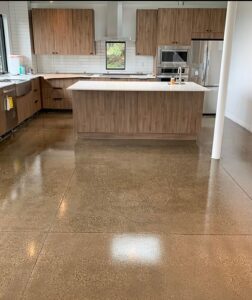There is a lot to love about concrete countertops—their durability, their sleek and modern look. But without the right maintenance, concrete can quickly lose its aesthetic appeal and become less and less durable. When they are well maintained, your concrete countertops can last the length of your kitchen’s life and still look great. They are low maintenance when you know the right maintenance. Protect your concrete by cleaning it regularly and keeping the sealant strong. With proper treatment, regular sealing, and regular cleanings, your countertops can look great longer.
Proper Care
Concrete is very long lasting, but you don’t just want it to last long, you want it to look good too. For that to happen it will need to be cared for. Though it is a durable material, it is not impervious to cracks, burns, and stains. Do not place hot pots and pans directly onto your countertops.
Sealing
Sealing your countertops will help provide a water and stain resistant surface. This protective layer can also reduce the risk of nicks and cracks. Some experts recommend that you seal your countertops around once a month. Sealing is an easy and quick process that can be done at home with just a rag and some sealant. If you want a more polished look, once a month is probably a good idea.
However, if you prefer a more rustic look, you may want to seal every few months. Sealing is very important and should not be overlooked. The protective layer of a sealant not only keep your countertops from cracking and staining, but it also makes it looks polish and finished.
Cleaning
To clean your concrete countertops, use soap and water. Any bleach or strong chemicals can damage your sealant and stain your countertop. Just some basic dish soap and warm water will do the trick. Other natural cleaners such as vinegar and lemon juice can actually harm your concrete.
If your countertops have been stained and need something a little stronger than soap and water, there are other options. Laundry detergent can be an effective stain remover. Or you ban to create a paste with hydrogen peroxide and flour—spread this paste over stain area and cover with plastic wrap. Let it sit for about an hour or until completely dry. Peel it away and wipe down with a wet cloth. Repeat if necessary.
Dealing with Cracks
An unfortunate side effect of your concrete countertops getting damaged can include cracks. Cracks are usually caused by stress on the stone. Hairline cracks can also occur because of shrinkage from drying out or heat. These cracks may not always be avoidable. When they aren’t, they may be repairable. Start by cleaning the crack and removing any stains. If the crack is thin enough a new layer of sealant may hide it for you—just make sure it penetrates the crack. But if that doesn’t do the trick, use a highly fluid epoxy to fill the crack, scrape off any excess quickly, smoothing out the countertop completely.



